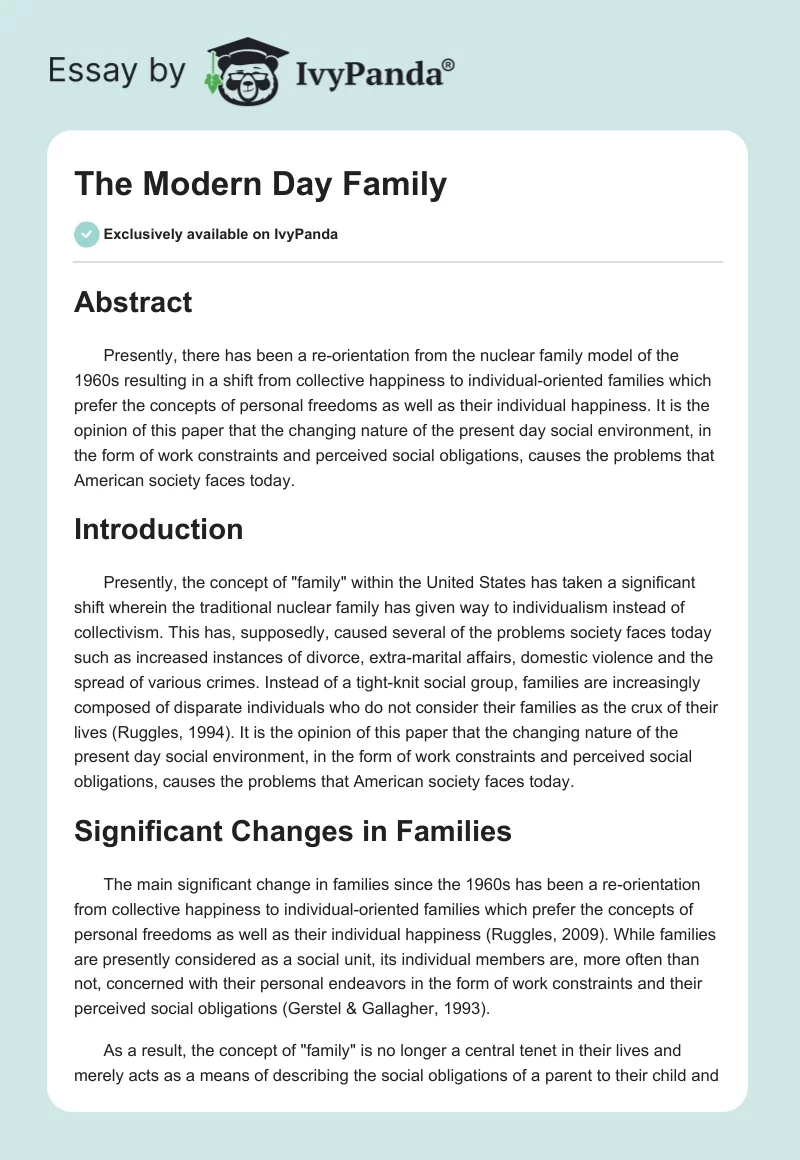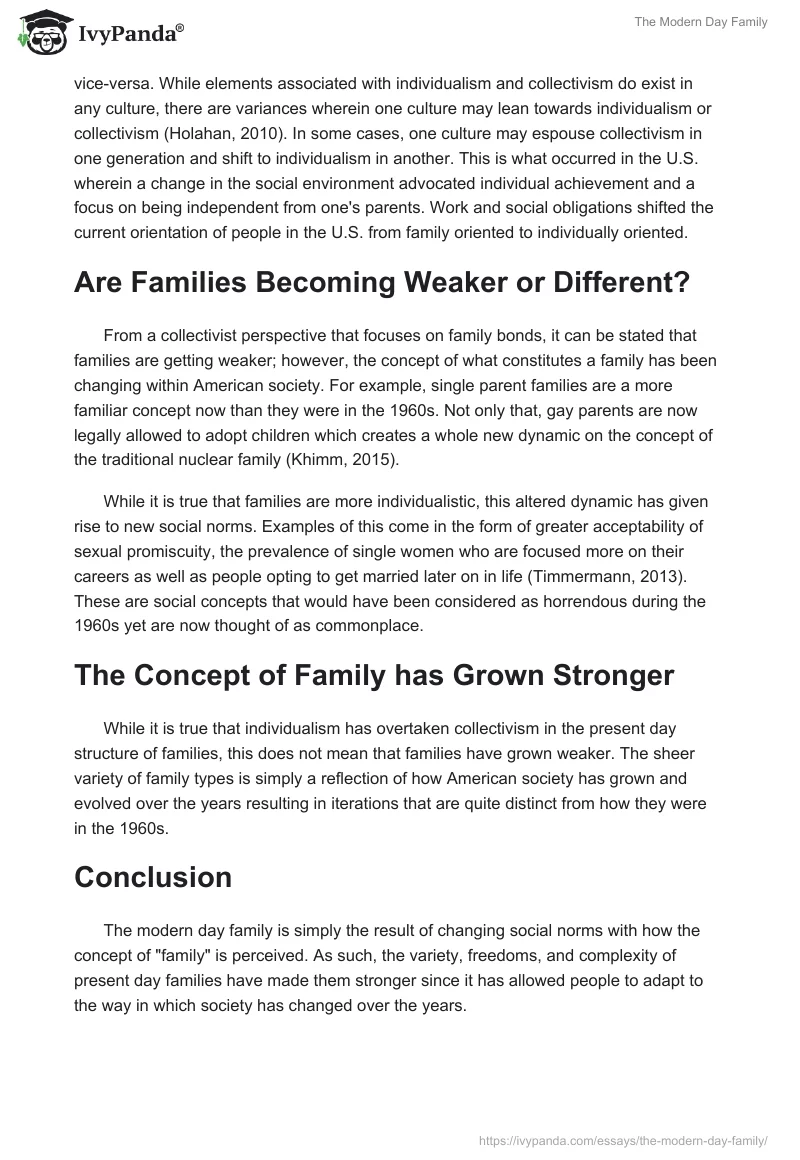Abstract
Presently, there has been a re-orientation from the nuclear family model of the 1960s resulting in a shift from collective happiness to individual-oriented families which prefer the concepts of personal freedoms as well as their individual happiness. It is the opinion of this paper that the changing nature of the present day social environment, in the form of work constraints and perceived social obligations, causes the problems that American society faces today.
Introduction
Presently, the concept of “family” within the United States has taken a significant shift wherein the traditional nuclear family has given way to individualism instead of collectivism. This has, supposedly, caused several of the problems society faces today such as increased instances of divorce, extra-marital affairs, domestic violence and the spread of various crimes. Instead of a tight-knit social group, families are increasingly composed of disparate individuals who do not consider their families as the crux of their lives (Ruggles, 1994). It is the opinion of this paper that the changing nature of the present day social environment, in the form of work constraints and perceived social obligations, causes the problems that American society faces today.
Significant Changes in Families
The main significant change in families since the 1960s has been a re-orientation from collective happiness to individual-oriented families which prefer the concepts of personal freedoms as well as their individual happiness (Ruggles, 2009). While families are presently considered as a social unit, its individual members are, more often than not, concerned with their personal endeavors in the form of work constraints and their perceived social obligations (Gerstel & Gallagher, 1993).
As a result, the concept of “family” is no longer a central tenet in their lives and merely acts as a means of describing the social obligations of a parent to their child and vice-versa. While elements associated with individualism and collectivism do exist in any culture, there are variances wherein one culture may lean towards individualism or collectivism (Holahan, 2010). In some cases, one culture may espouse collectivism in one generation and shift to individualism in another. This is what occurred in the U.S. wherein a change in the social environment advocated individual achievement and a focus on being independent from one’s parents. Work and social obligations shifted the current orientation of people in the U.S. from family oriented to individually oriented.
Are Families Becoming Weaker or Different?
From a collectivist perspective that focuses on family bonds, it can be stated that families are getting weaker; however, the concept of what constitutes a family has been changing within American society. For example, single parent families are a more familiar concept now than they were in the 1960s. Not only that, gay parents are now legally allowed to adopt children which creates a whole new dynamic on the concept of the traditional nuclear family (Khimm, 2015).
While it is true that families are more individualistic, this altered dynamic has given rise to new social norms. Examples of this come in the form of greater acceptability of sexual promiscuity, the prevalence of single women who are focused more on their careers as well as people opting to get married later on in life (Timmermann, 2013). These are social concepts that would have been considered as horrendous during the 1960s yet are now thought of as commonplace.
The Concept of Family has Grown Stronger
While it is true that individualism has overtaken collectivism in the present day structure of families, this does not mean that families have grown weaker. The sheer variety of family types is simply a reflection of how American society has grown and evolved over the years resulting in iterations that are quite distinct from how they were in the 1960s.
Conclusion
The modern day family is simply the result of changing social norms with how the concept of “family” is perceived. As such, the variety, freedoms, and complexity of present day families have made them stronger since it has allowed people to adapt to the way in which society has changed over the years.
Reference List
Gerstel, N., & Gallagher, S. K. (1993). Kinkeeping and Distress: Gender, Recipients of Care, and Work-Family Conflict. Journal Of Marriage & Family, 55(3), 598-608.
Holahan, J. (2010, September 28). My Nuclear Family. Christian Science Monitor. p. N.PAG.
Khimm, S. (2015). The New Nuclear Family. New Republic, 246(11), 8-10.
Ruggles, S. (2009). Reconsidering the Northwest European Family System: Living Arrangements of the Aged in Comparative Historical Perspective. Population & Development Review, 35(2), 249-273.
Ruggles, S. (1994). The transformation of American family structure. American Historical Review, 99(1), 103.
Timmermann, S. (2013). What Ever Happened to the Nuclear Family? Impact of a Changing America on Financial Services. Journal Of Financial Service Professionals, 67(1), 27-29.


